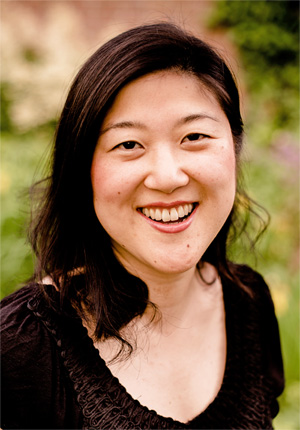The sun is still shining here in San Diego. After 6.5 weeks of being homeless, living in hotels and staying with my parents in Pennsylvania, my family and I are finally installed in our own house, which we now call home in a neighborhood called Kensington. We are gradually settling in to our new lives here.
We’re not in Kansas anymore
The Germans in my house, namely my husband and two daughters, are enamored with the ice maker in our refrigerator, insisting on having ice in all of their drinks. My older daughter stares enraptured at the microwave, witnessing cold rice going in and hot rice coming out. We didn’t have a microwave in Germany by choice, and I wouldn’t have bought one here except that they seem to be standard equipment in most houses.
We tried the Bavarian Rye bread, which had been recommended by the German members of the North County deutsche Spielgruppe, from Trader Joe’s. My husband said it wasn’t bad, but I couldn’t eat much of it. I begged him to make me some Kässpätzle this evening. It was a nice treat for someone else to cook, but even though he did an excellent job, the Spätzle just didn’t taste the same. It was because of the eggs. Even though we buy organic, the eggs here taste horribly anemic. We’ll try some eggs from one of the many Farmer’s Market next and have even started joking about getting our own hen.
Starting Kindi again
Vera, our older daughter, completed her first week at Die Rasselbande, the German preschool here in San Diego. We’re pleased to have found it. It has most of the qualities we are seeking: caring and nurturing caregivers who are well-organized and qualified including a competent director. The facilities were not as fancy as a preschool in a posher neighborhood, but the children seemed to have a lot of space. They also put in new flooring and got rid of the stained carpeting that had been in the classrooms when we first visited. Most importantly, they speak and teach only in German. It is like a German island in the city limits except that many of the parents don’t speak German. I hear some of the children speaking English, but Vera assures me that she still responds in German.
Probably the one misgiving I have about the preschool is the fact that there aren’t any mixed age groups. For some reason, the parents who had originally started the preschool as a co-op, opted to divide the classes according to age: 2-3 year olds in one group, 3-4 year olds in another, 4-5 year olds in yet another. I observed my younger daughter Stella, playing with the play cash register in Vera’s classroom, as we got Vera settled in. Some other boys who were Vera’s age (i.e. two years older) seemed to squeeze her out of the way, without actually touching her. Stella didn’t respond well; the boys didn’t respond well to that. I thought of how this similar situation would have probably played out in our old kindergarten. The boys probably would have talked to Stella, maybe even tried explaining how the cash register worked and then carried on playing with each other. Playing with children of other ages seems to teach them how to interact in a society better. It certainly helped Vera become a better big sister as she understood suddenly more that her new little sister had limitations by virtue of being a baby. I’m trying not to fret about this one point, but I did talk to Vera about how important it is to know how to play with children younger than she is and reinforce how well she does that already.
Something else new for us is packing lunch. We had opted for the warm lunches served at the old kindergarten. It was usually Spätzle, Sausage Gulasch, Frikadelle, or Geschnetzeltes. Here, we get the option of ordering pasta on Tuesdays and pizza on Fridays. On our first day of packing lunch though, I made simple rice balls wrapped with sheets of seasoned seaweed, a Korean style omelette and included grapes, broccoli and Gogurt for Vera, all in her German flag Tupperware container. My mother was skeptical that this would go down well, fearing Vera would feel self-conscious, but the container came home empty. Each day I ask Vera what she wants for lunch, and she tells me that she wants to the same thing.
Somehow, our Korean American German life is coming together here in San Diego.





About the eggs… I don’t know if it affects the taste or not, but that more orange hue of egg yolks in Germany comes from a coloring agent called Canthaxanthin — which is added to the chicken feed in Germany, but not in the USA. So your organic US eggs are without that additive.
Thanks for the info, Hyde. Do you know if that applies to German organic eggs? In any case, the taste is not comparable … I’m going to go get a taco instead!
I can’t say for sure about the organic eggs in Germany, but if they’re supposed to be “bio” I would think not. There seems to be some debate about the use of Canthaxanthin in Germany – and if it is “safe” or not. Germans shun most food coloring (not even in Gummi Bears!), so I was surprised to learn a while back that German eggs have color added.